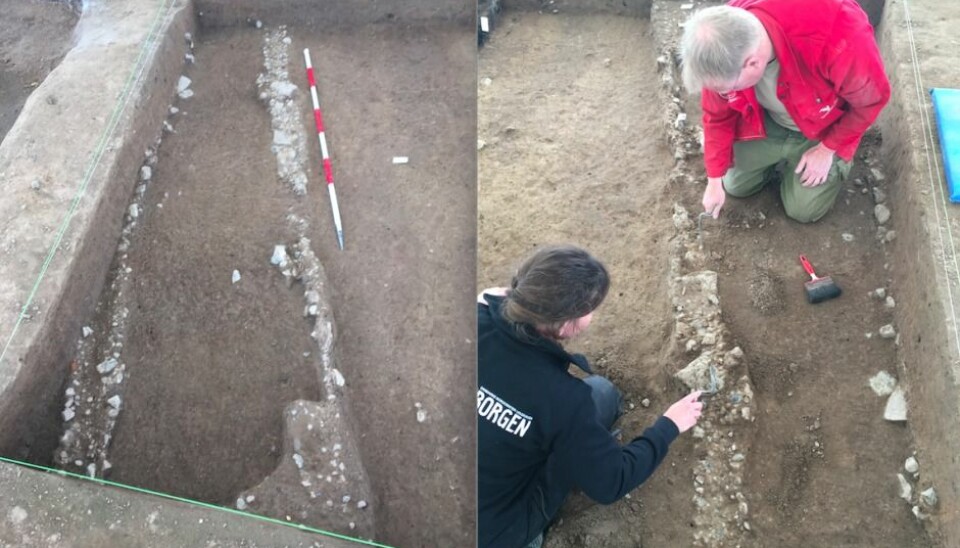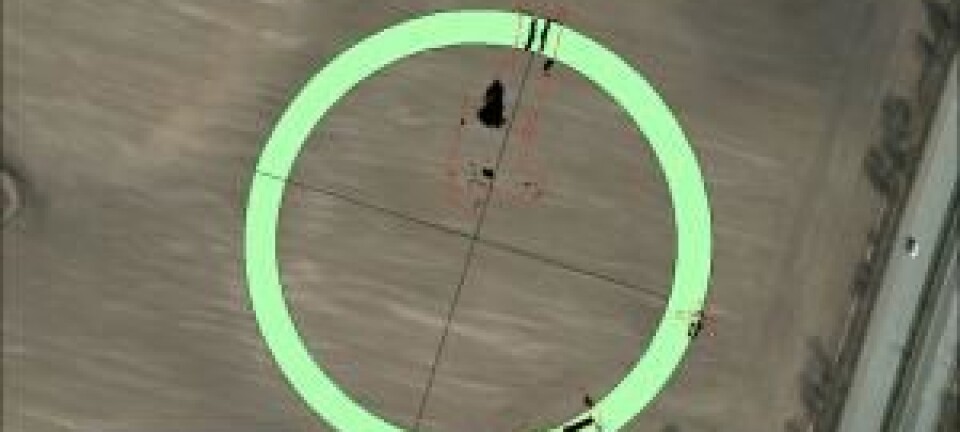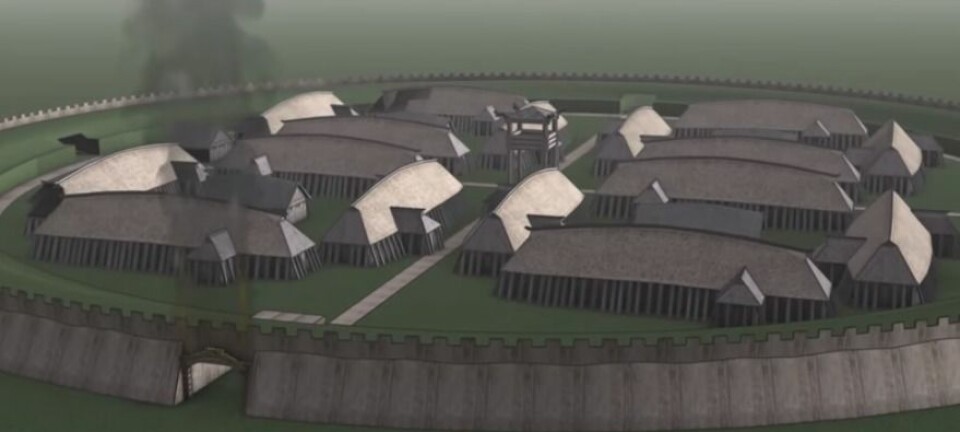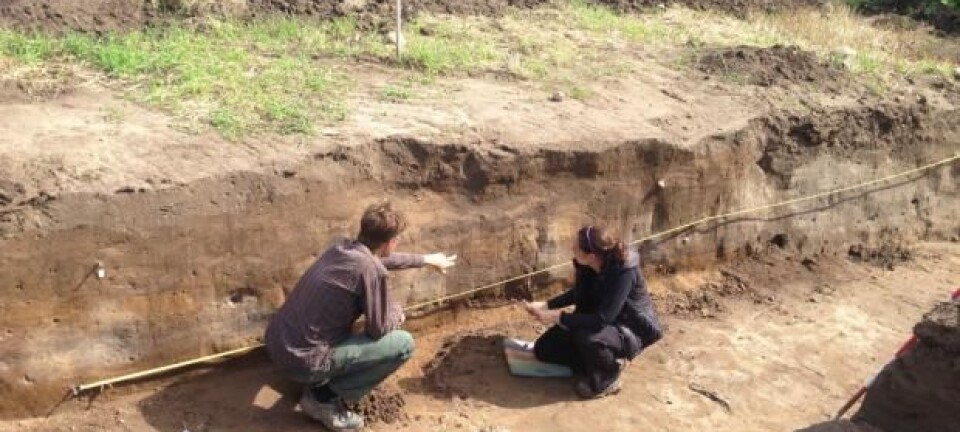
Wheel tracks discovered at Viking fortress in Denmark
Newly discovered wheel tracks by the Viking fortress “Borgring” is a rare witness to life in Denmark’s fifth Viking fortress. Archaeologists hope to learn more about the fortress when they know just how old the tracks are.
Archaeologists excavating the Viking round fortress “Borgring” close to Køge in Denmark, have made a new discovery, a set of wheel tracks near the north gate of the fortress.
“During the excavations we suddenly found long tracks full of small stones. The stones are pressed down into the soil, so we can see that carts have been driven over the top of them. Stones don’t occur naturally in the layers, but are laid down by the Vikings to avoid the carts sinking,” says archaeologist Jonas Christensen.
Archaeologists have so far revealed five metres of the small stone-filled tracks, which are approximately 90 centimetres apart. The stones measure approximately five centimetres across, but some are bigger.
“The ruts were probably made by four-wheeled carts, which we’ve also found tracks of at other locations from the Viking Age. It consisted of an undercarriage with four spoked wheels and a carriage box. It was probably pulled by an ox,” says Christensen.
Looking directly into the Viking Age
At the start of the excavation, the archaeologists had expected to find burnt timber from the fire that ravaged the fortress during Viking times.
“We had no clues that there would be wheel tracks. So it was a good surprise,” says Christensen.
The discovery does not offer any new knowledge on life in Viking Denmark in general, but it is a peculiar discovery for this fortress.
“We find many details of how Borgring was built, but we have few finds that give us an understanding of those who lived there. Wheel tracks are an indication that there was a lot of traffic in and out of the Viking fortress. It’s a type of footprint left by the Vikings,” he says.
“It brings the site to life when we find signs of the people that have lived at Borgring. You can suddenly look directly into the Viking Age,” says Christensen.
Museum curator at the National Museum of Denmark, Peter Pentz, who was not involved in the excavations, also describes the new discovery as exciting.
“I would think that it is a likely explanation that they’ve found wheel tracks, even though the distance between the tracks is small. Finding wheel tracks is not in itself ground-breaking, we know of many even from before the Viking Age. But attaching them to Borgring is interesting,” he says.
Wheel tracks are a sign of life at the fortress
The fortress has been somewhat mysterious since it was first discovered in 2014, because it seemed to have been left almost empty since the Viking Age.
Scattered signs of life have been found, such as beads, a Viking toolbox, and a type of English ceramics.
The wheel tracks contribute to the picture that the fortress was not entirely empty, says Christensen.
“The discovery of the tracks shows us that there was a bit of traffic in and out of Borgring. Some tracks are oblique. This is probably because the soil had become so boggy and muddy that they had tried to establish new tracks in a new direction. Using the same tracks so many times has created deep groves,” he says.
The age of the ruts is essential
Archaeologists do not yet know if the tracks pre-date or post-date the fire. Getting the timing right is crucial for understanding the history of the fortress.
“If the tracks are from before the fire, then they probably originate to when the fortress was built. But if they first appeared after the fire then it’s a sign that Vikings were using the fortress. This would support the traces of craftsmen that we found at the east gate,” says Christensen, referring to the discovery of a Viking toolbox.
The next step is to get a concrete date on the tracks.
But this could be tricky, says Pentz.
“It’s difficult to date wheel tracks that are sunk into the earth. [We need to date them very precisely to understand Borgring]. So it will be really exciting to determine where the tracks belong in the soil layers,” he says.
--------------------
Read more in the Danish version of this story on Videnskab.dk
Translated by: Catherine Jex











